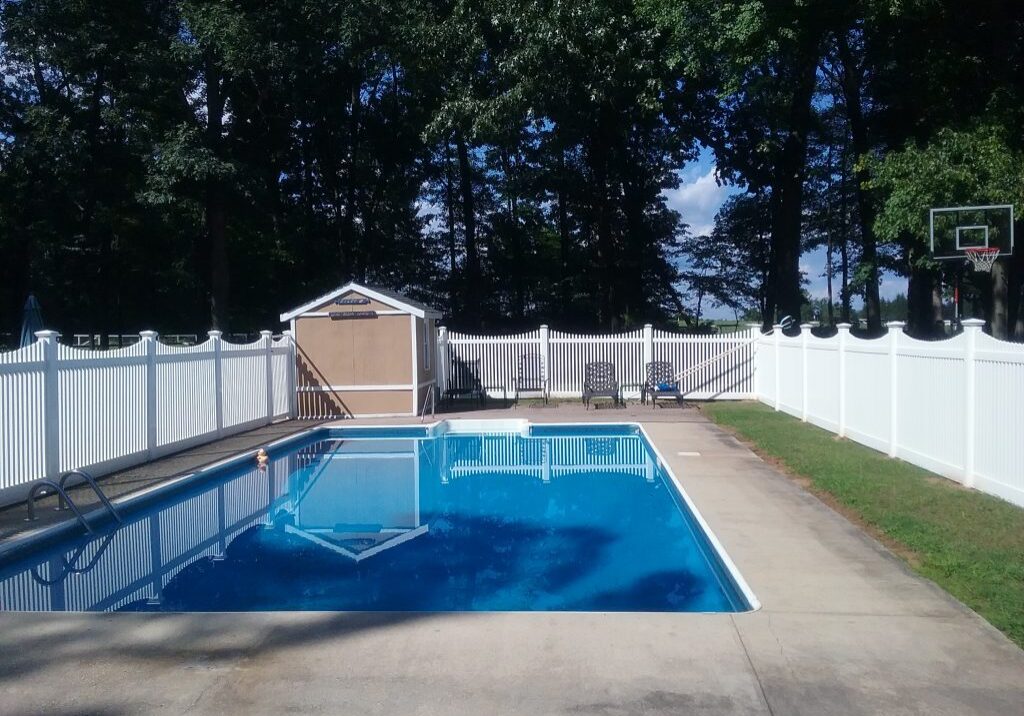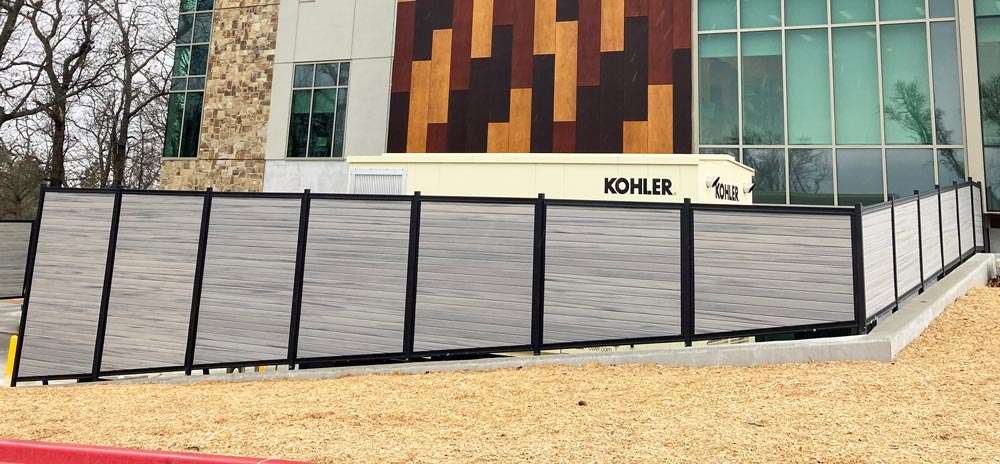All Categories
Featured
As sustainability comes to be a progressively vital element in home and business building style, the need for green products remains to increase. This includes materials for exterior spaces, specifically for fencings. While traditional fencing alternatives like steel, vinyl, and wood can have significant environmental disadvantages, there are a number of lasting and green options available. Selecting ecologically liable fence products helps in reducing your carbon impact and sustains preservation initiatives. Let's check out some of the most effective green secure fencing choices that advertise sustainability while additionally providing durability and style.
Advantages: Bamboo calls for minimal water, chemicals, and plant foods to expand. It is naturally degradable, reducing waste at the end of its life process. It is immune and likewise long lasting to rot, making certain long life with proper treatment. Considerations: Bamboo might not be ideal for areas with rough wintertimes or extreme cold, as it can come to be brittle and fracture in freezing temperature levels. 2. Recycled Products Secure Fencing. Fencings made from recycled materials, such as post-consumer plastics, recovered wood, or recycled steel, are ending up being progressively preferred in eco-conscious designs. These products decrease waste, conserve sources, and lessen the requirement for the extraction of basic materials, which is helpful for the setting. By repurposing existing products, you add to decreasing the need for new, energy-intensive production processes.
Perks: Using recycled materials assists divert waste from landfills, lowers ecological impact, and can reduce your carbon footprint. It is additionally an affordable option sometimes. Considerations: The aesthetic of recycled product fences can differ, and some may not accomplish the exact same natural appearance as typical timber fences. Many manufacturers now offer designs that reproduce the look of wood or rock. 3. Compound Fence. Composite fence is made from a mixture of wood fibers and plastic, commonly sourced from recycled material. This sort of fence supplies the look of wood with very little upkeep, while additionally being eco friendly. Compound materials are usually long-lasting and resistant to the aspects, lowering the demand for frequent substitute or therapy with chemicals.
![]()
Perks: Composite fences are durable, low-maintenance, and can be made from recycled web content, helping in reducing waste. They do not call for unsafe chemicals for conservation, unlike treated timber. Considerations: While composite fence is resilient, it often tends to be extra pricey upfront compared to typical timber. Its durability and reduced upkeep might make it a much more cost-efficient choice over time. 4. Cedar and Redwood Fence. Cedar and redwood are prominent choices for environmentally-conscious secure fencing, as both products are normally long lasting, resistant to degeneration, and need marginal chemical therapies. These woods can be sustainably collected from properly handled forests, ensuring their green standing. They likewise have a natural beauty that many home owners appreciate, with abundant colors and structures that enhance visual appeal.
Perks: Cedar and redwood fencings are resilient, normally pest-resistant, and have a low environmental effect when gathered sustainably. They likewise have a timeless visual and can blend seamlessly right into all-natural landscapes. Factors to consider: While cedar and redwood are much more green than other kinds of wood, they are still timber products and call for appropriate maintenance to stop decay. The cost may also be greater compared to other materials. 5. Living Fences (Hedges and Bushes) For those looking for a much more green and natural alternative, living fencings, or hedges, are an outstanding selection. Popular options for living fencings include privet, boxwood, and bamboo.
Benefits: Living fences enhance air top quality, add to biodiversity, and supply a natural appearance that blends perfectly with the landscape. They likewise minimize noise contamination and assist manage temperatures in your backyard. Factors to consider: Living fences need regular maintenance, such as pruning and watering, and may not appropriate for every climate. They also call for time to develop before they can offer complete privacy. 6. Rock and Brick Secure Fencing (Recovered) Rock and brick are exceptionally long lasting materials, and making use of reclaimed stone or brick can be an environment-friendly way to construct a fencing. By reusing these products from old buildings or frameworks, you lower the demand for new sources and minimize waste. Rock and brick fences are solid, need little maintenance, and provide a timeless seek to any residential property.
![]()
Perks: Recovered stone and brick fencings are incredibly long-lasting, low-maintenance, and offer exceptional privacy and security. They are also energy-efficient, as they help control temperature by serving as natural insulators. Factors to consider: Setup of rock and brick fences can be more costly and labor-intensive than various other products. Furthermore, these fences may not be suitable for all properties as a result of the weight and the demand for appropriate installation. Conclusion. Eco-friendly secure fencing choices are commonly readily available and can be personalized to fit the aesthetic and functional needs of your home. Bamboo, recycled materials, composite fence, and cedar or redwood all provide lasting options to typical products. Living fences and recovered stone or block give extra eco-conscious selections that also aid improve your outdoor area. By choosing among these sustainable fence products, you're making a favorable influence on the environment while developing a useful and gorgeous exterior location. Whether you're concentrated on reducing your carbon footprint or sustaining biodiversity, there's a variety of environmentally friendly choices to take into consideration.
- Bamboo Secure fencing. Bamboo is one of the most environment-friendly materials offered for fence. Bamboo fencings are strong, normally immune to bugs, and supply a stunning, natural aesthetic.
Advantages: Bamboo calls for minimal water, chemicals, and plant foods to expand. It is naturally degradable, reducing waste at the end of its life process. It is immune and likewise long lasting to rot, making certain long life with proper treatment. Considerations: Bamboo might not be ideal for areas with rough wintertimes or extreme cold, as it can come to be brittle and fracture in freezing temperature levels. 2. Recycled Products Secure Fencing. Fencings made from recycled materials, such as post-consumer plastics, recovered wood, or recycled steel, are ending up being progressively preferred in eco-conscious designs. These products decrease waste, conserve sources, and lessen the requirement for the extraction of basic materials, which is helpful for the setting. By repurposing existing products, you add to decreasing the need for new, energy-intensive production processes.
Perks: Using recycled materials assists divert waste from landfills, lowers ecological impact, and can reduce your carbon footprint. It is additionally an affordable option sometimes. Considerations: The aesthetic of recycled product fences can differ, and some may not accomplish the exact same natural appearance as typical timber fences. Many manufacturers now offer designs that reproduce the look of wood or rock. 3. Compound Fence. Composite fence is made from a mixture of wood fibers and plastic, commonly sourced from recycled material. This sort of fence supplies the look of wood with very little upkeep, while additionally being eco friendly. Compound materials are usually long-lasting and resistant to the aspects, lowering the demand for frequent substitute or therapy with chemicals.

Perks: Composite fences are durable, low-maintenance, and can be made from recycled web content, helping in reducing waste. They do not call for unsafe chemicals for conservation, unlike treated timber. Considerations: While composite fence is resilient, it often tends to be extra pricey upfront compared to typical timber. Its durability and reduced upkeep might make it a much more cost-efficient choice over time. 4. Cedar and Redwood Fence. Cedar and redwood are prominent choices for environmentally-conscious secure fencing, as both products are normally long lasting, resistant to degeneration, and need marginal chemical therapies. These woods can be sustainably collected from properly handled forests, ensuring their green standing. They likewise have a natural beauty that many home owners appreciate, with abundant colors and structures that enhance visual appeal.
Perks: Cedar and redwood fencings are resilient, normally pest-resistant, and have a low environmental effect when gathered sustainably. They likewise have a timeless visual and can blend seamlessly right into all-natural landscapes. Factors to consider: While cedar and redwood are much more green than other kinds of wood, they are still timber products and call for appropriate maintenance to stop decay. The cost may also be greater compared to other materials. 5. Living Fences (Hedges and Bushes) For those looking for a much more green and natural alternative, living fencings, or hedges, are an outstanding selection. Popular options for living fencings include privet, boxwood, and bamboo.
Benefits: Living fences enhance air top quality, add to biodiversity, and supply a natural appearance that blends perfectly with the landscape. They likewise minimize noise contamination and assist manage temperatures in your backyard. Factors to consider: Living fences need regular maintenance, such as pruning and watering, and may not appropriate for every climate. They also call for time to develop before they can offer complete privacy. 6. Rock and Brick Secure Fencing (Recovered) Rock and brick are exceptionally long lasting materials, and making use of reclaimed stone or brick can be an environment-friendly way to construct a fencing. By reusing these products from old buildings or frameworks, you lower the demand for new sources and minimize waste. Rock and brick fences are solid, need little maintenance, and provide a timeless seek to any residential property.

Perks: Recovered stone and brick fencings are incredibly long-lasting, low-maintenance, and offer exceptional privacy and security. They are also energy-efficient, as they help control temperature by serving as natural insulators. Factors to consider: Setup of rock and brick fences can be more costly and labor-intensive than various other products. Furthermore, these fences may not be suitable for all properties as a result of the weight and the demand for appropriate installation. Conclusion. Eco-friendly secure fencing choices are commonly readily available and can be personalized to fit the aesthetic and functional needs of your home. Bamboo, recycled materials, composite fence, and cedar or redwood all provide lasting options to typical products. Living fences and recovered stone or block give extra eco-conscious selections that also aid improve your outdoor area. By choosing among these sustainable fence products, you're making a favorable influence on the environment while developing a useful and gorgeous exterior location. Whether you're concentrated on reducing your carbon footprint or sustaining biodiversity, there's a variety of environmentally friendly choices to take into consideration.
Latest Posts
Chill, Sip, and Enjoy at Shake Alley
Published Apr 20, 25
2 min read
Maximize Your Savings Prospective with WyHy MAX Cash Market
Published Apr 20, 25
1 min read
Trusted Auto Repair in Your Area - Trust Montclare’s Certified Professionals
Published Apr 20, 25
2 min read